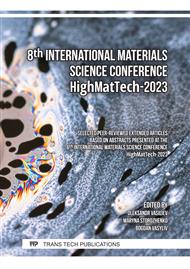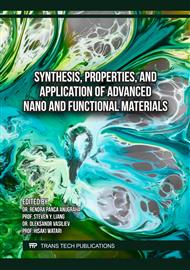p.55
p.69
p.77
p.87
p.95
p.101
p.111
p.119
p.127
Effect of Crystallization Properties of Continuous Basalt Fibers on Thermal Stability of Composite Materials
Abstract:
The thermal stability of composite materials based on basalt fibers is determined by the strength of fibers under thermal stress. The decrease in strength occurs due to the crystallization of the original fibers and the development of microcrystalline nuclei in them during heating. Experimental studies of the influence of the processing temperature of continuous basalt fibers on their strength have been carried out. It has been established that the strength of fibers during their heat treatment up to 400оС decreases by 25 % from the initial one. At the temperature of approximately 500оС, the strength of the fibers is almost half. At 600оС, the fiber strength is 20 % of the initial strength. At a processing temperature of 700оС, the fiber is completely destroyed. The main reasons for the decrease in fiber strength are the development of microcrystalline nuclei that have formed in the fibers at the drawing stage in the crystallization zone. From above, this zone is determined by the temperature of the upper limit of melt crystallization, and from below it is limited by the glass transition temperature. The residence time of the melt in this range is the crystallization time. Calculations the speed of movement and the cooling rate of the melt stream during fiber drawing were carried out, which made it possible to determine the temperature zone and time of crystallization. The results of theoretical studies have shown that for the production of fibers used in composites, it is necessary to select such basalts and conditions for the fiber drawing, under which the values of the temperature zone and time of crystallization will be the smallest.
Info:
Periodical:
Pages:
95-100
Citation:
Online since:
February 2024
Authors:
Price:
Сopyright:
© 2024 Trans Tech Publications Ltd. All Rights Reserved
Share:
Citation:



